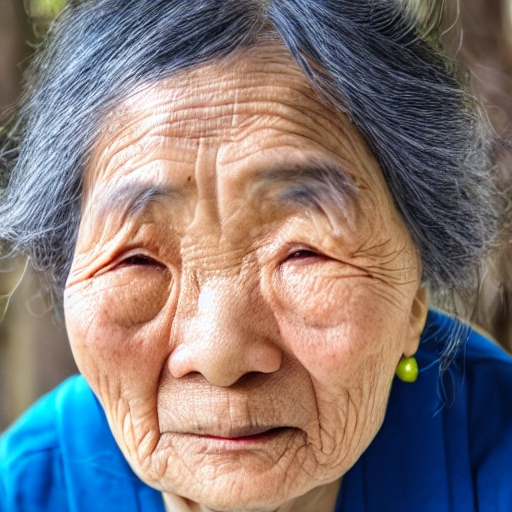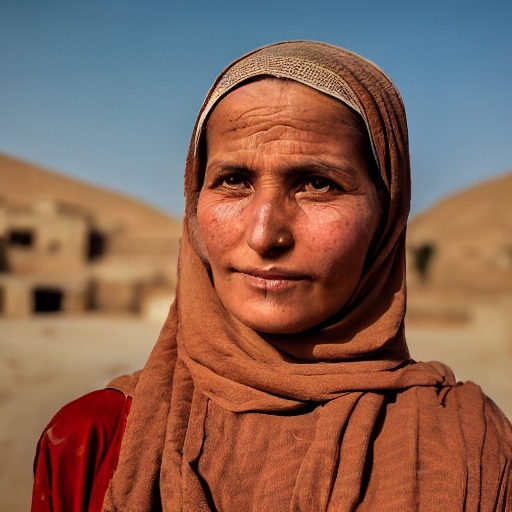
This short film features three BA Fashion, Textiles, Footwear & Accessories students discussing their experiences using Generative AI (GAI) in their projects. The students demonstrate diverse applications of GAI, highlighting how they tailor the technology to their individual creative needs.
The film features Subject Head Jane Mills, who discusses the potential of AI to support students, and outlines the introduction of a new AI logbook – designed to provide a framework for students to confidently explore and utilize GAI for brainstorming and research purposes.
In celebration of International Women’s Day, I decided to use AI image generation to create some beautiful, photo-realistic portraits of women from around the world, in traditional dress.
Those of you who know me personally will know that I worked as a Freelance Graphic Designer for many years before becoming a Learning Technologist. Whilst I no longer work as a Graphic Designer, I do still keep my ear to the ground in the Graphic Design communities where there has been such a mixed reaction to AI image generation. It has been really interesting to watch the reactions over the last six months, as AI image generation has improved so much in such a short time. I, like many others, see it as an amazing and powerful tool that can work with a digital artist to produce pieces of work in a fraction of the time.
Limitations at the beginning
I used deepai.org, a free online text-to-image website that doesn’t require any login or registration, to play around and explore this new medium. For those simply wanting to type a keyword or two and see the result, it is really good fun. You could waste hours of your life just typing in different keywords and seeing what you get. It’s just so much fun creating weird and wonderful images! Here was one of my first attempts. I’d just asked for a sunflower, I wasn’t expecting a little Panda face peering out from the middle. I quickly learned what I’d done wrong and was determined to get better control over the results.

Writing Prompts: There is a skill to it!
I went back to the Graphic Design community blogs and YouTube videos where I’d seen absolutely stunning results, with futuristic and surreal city-scapes and weird fantastical creatures. Most of the designers I saw are using a platform called Midjourney. Midjourney offers a free trial and then a monthly subscription of just $10 a month for their cheapest plan. These AI artists, and yes I will call them artists despite how controversial that is, are using and sharing specific prompts that, through trial and error, they have found work really effectively to achieve certain visual effects.
It is quite well accepted that AI can’t do hands and often can’t do faces particularly well. I often see lions with 6 legs. You end up with some fairly disturbing images sometimes. The image below was created when I asked for a scene with The Queen of England. You’ll see in this example what I mean when I say it can’t do faces. (The little furry, three-eared creature, with no eyes, was supposed to be Paddington 😞).

Harnessing the power of AI
Despite using a free AI image generator, which states very clearly on its homepage NOT to expect photo realism, I was amazed by these results. I was blown away by the quality of all the images that came out, and the ones I’ve omitted from my gallery below, I’ve only done so because they looked a bit too airbrushed.
The prompt I generally used went as follows; (X is the nationality)
“Create a portrait of a traditional X woman, clear facial features, cinematic, 35mm lens, f/1.8, accent lighting, global illumination"
Why don’t you give it a go and try a different nationality? I’d love to hear how you got on.
A much longer version of this prompt was originally shared on Reddit and I took it from a YouTube video. You can watch if you want to understand more about what some of those elements are in the prompt — https://youtu.be/KXCVBu4btUk. (Photographers reading this will already have recognised some of those terms).















How AI image generation works
You may be looking at the images, wondering who these people are and whether they want AI using their faces. Well, you may be surprised to find out that none of these women are real people. They do not exist. You will not find these faces anywhere on the internet. Of course, coincidently, they might happen to look like someone in the world, but the faces, along with the rest of the image, are created by AI.
For example, if I want to paint a picture of a horse, I don’t have a horse to look at, so I’ll find a number of images on the internet to observe the proportions, the face shape, the mane, etc. I look at lots of different images from different angles to get a good idea of what it looks like. Then I’ll do my painting based on what I’ve observed. Similarly, AI will look at thousands of images on the Internet based on the specifics you’d put in your prompt. It then uses that information to create a brand new, original (Royalty Free*) image just for you. If you don’t like it, you can just tweak your prompt and it’ll make you a brand new, original image.
*Check the T&Cs of the platform you are using
Moving forward with AI
AI is here to stay whether we like it or not. I hope that we can appreciate it for what it can do for us, and embrace the technology. I am all for technology that can save us time and AI image generation certainly does that. Does it replace the artist? No, not necessarily. As you have seen in the examples, there is a skill, and you do have to learn how to get the best results. I look forward to seeing the images get better and better.
In 2013 the Nominet Trust launched the Social Tech Guide. The aim of the guide is to promote and celebrate inspiring uses of technology for social good. Each year they publish the Nominet Trust 100, a guide to the 100 best digital technologies for social innovation. The 2015 guide has just been published and features a wide variety of technologies, from Flowy, a game to help people combat panic attacks, to MOM, an inflatable incubator for use with premature babies in the developing world, to WREX, a robotic exoskeleton to help children with neuromuscular diseases.
You can find out more and view the guide here: http://socialtech.org.uk/
Recent Posts
- Spotlight on Excellence: Bringing AI Conversations into Management Learning
- Blackboard Upgrade – December 2025
- Preparing for your Physiotherapy Apprenticeship Programme (PREP-PAP) by Fiona Barrett and Anna Smith
- Blackboard Upgrade – November 2025
- Fix Your Content Day 2025
- Blackboard Upgrade – October 2025
- Blackboard Upgrade – September 2025
- The potential student benefits of staying engaged with learning and teaching material
- LearnTech Symposium 2025
- Blackboard Upgrade – August 2025
Tags
ABL Practitioner Stories Academic Skills Accessibility Active Blended Learning (ABL) ADE AI Artificial Intelligence Assessment Design Assessment Tools Blackboard Blackboard Learn Blackboard Upgrade Blended Learning Blogs CAIeRO Collaborate Collaboration Distance Learning Feedback FHES Flipped Learning iNorthampton iPad Kaltura Learner Experience MALT Mobile Newsletter NILE NILE Ultra Outside the box Panopto Presentations Quality Reflection SHED Submitting and Grading Electronically (SaGE) Turnitin Ultra Ultra Upgrade Update Updates Video Waterside XerteArchives
Site Admin


